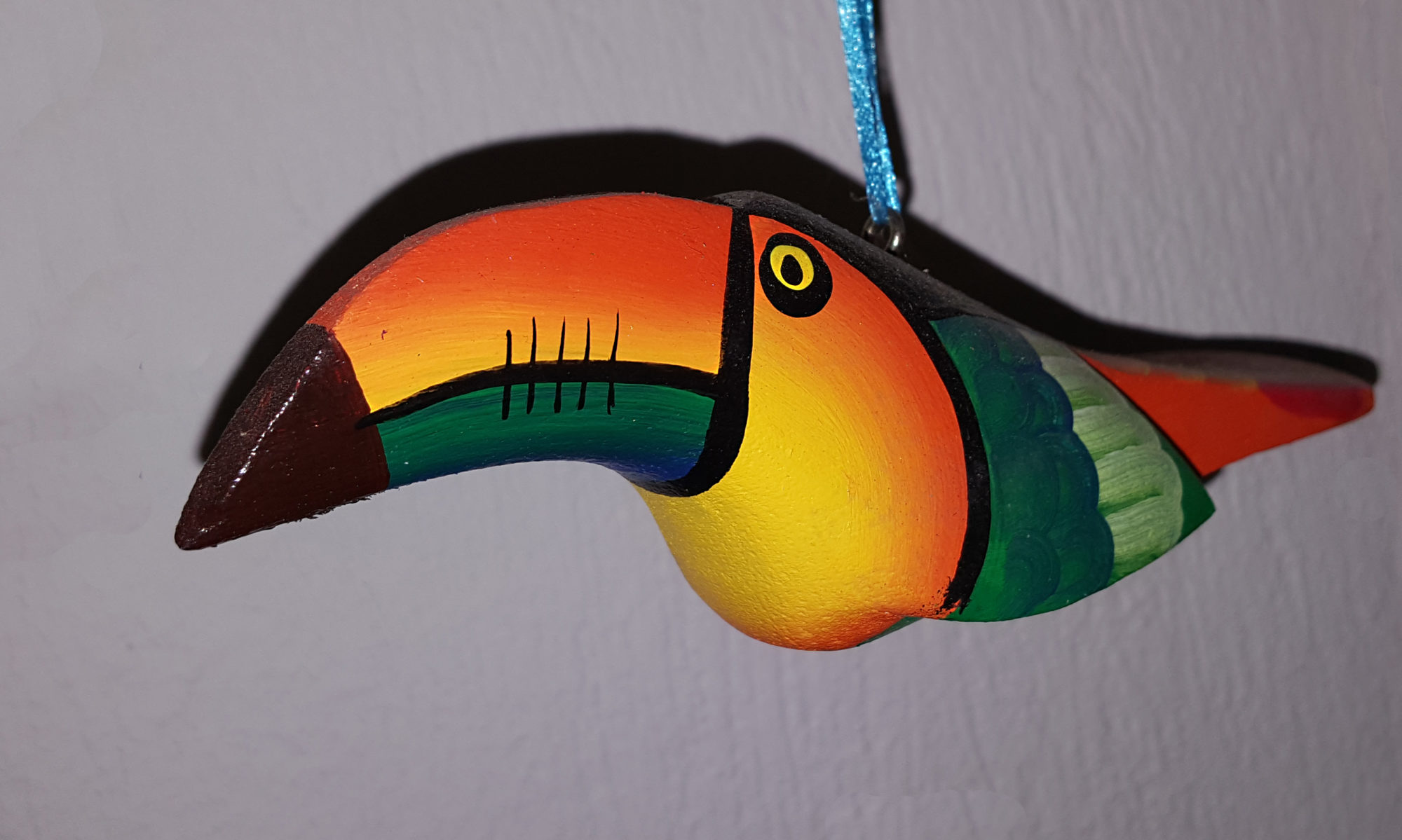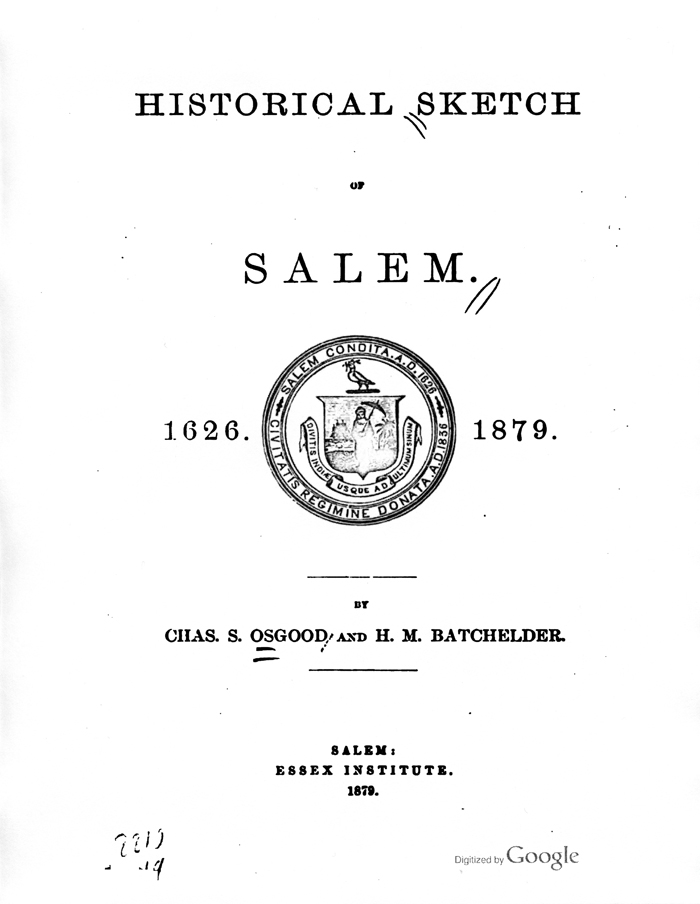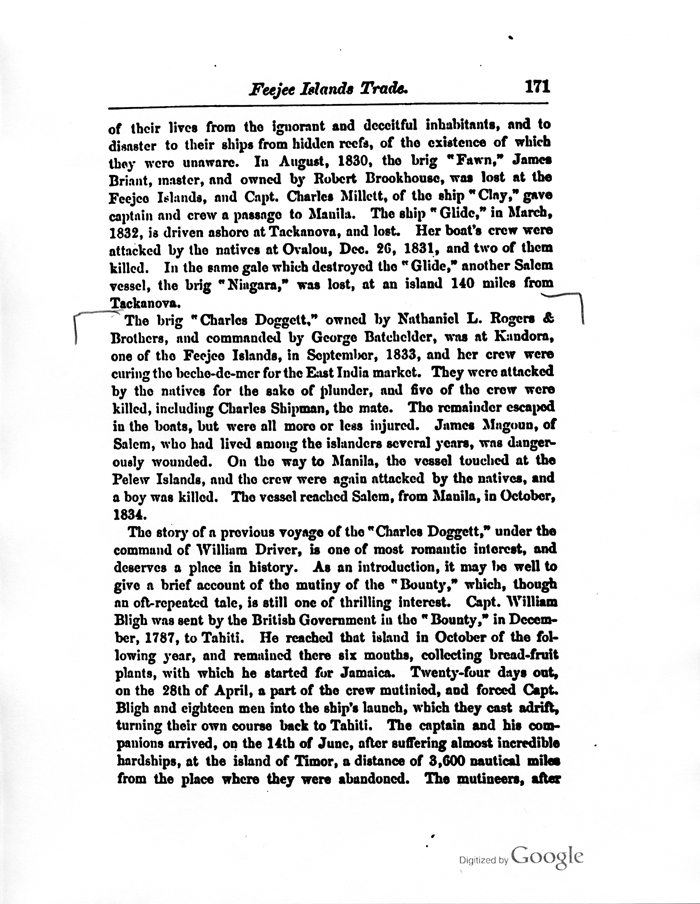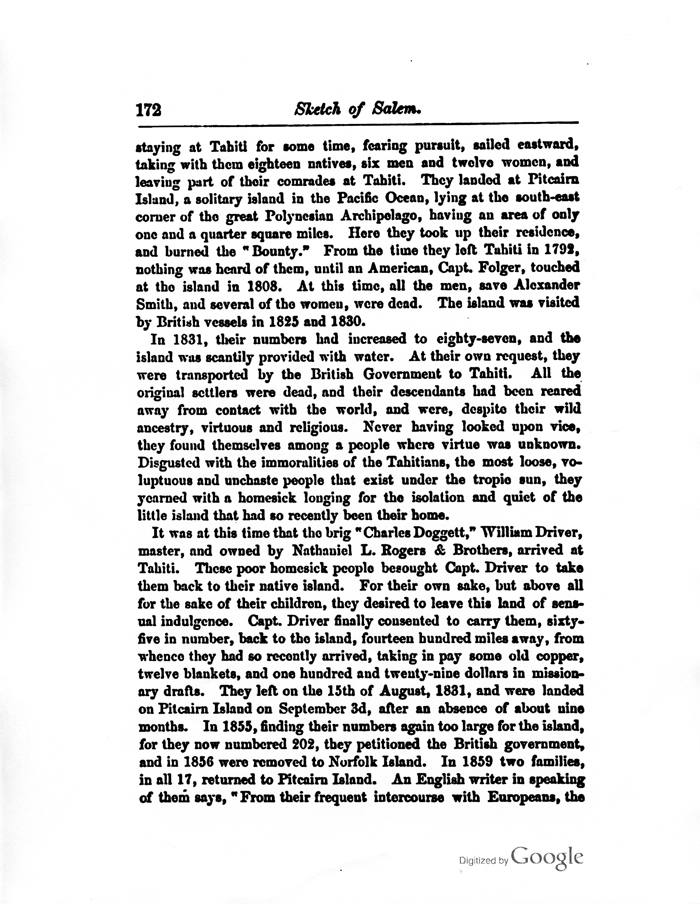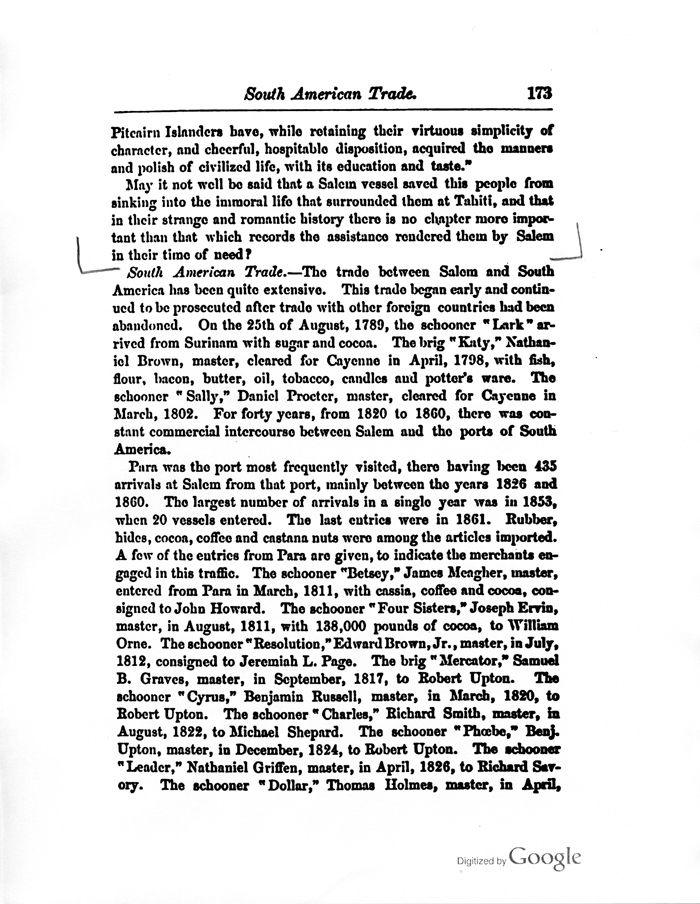Historical Sketch of Salem, 1626-1879
By Charles Stuart Osgood, Henry Morrill Batchelder
Pages 171-173 about Brig “Charles Doggett” copied from Google book:
-The actual pages of the book are further below, but first I present my typed copy which I think will be easier to read though I left all the spellings and punctuation as in the book. I did add a heading for each long paragraph in bold type as my summary of the contents of the sometimes confusing paragraphs, not all in chronological order:
Ship “Charles Doggett” Returns to Salem in 1834 after Fiji Island Mishaps
The brig “Charles Doggett,” owned by Nathaniel L. Rogers & Brothers, and commanded by George Batchelder, was in Kandora, one of the Feejee Islands, in September, 1833, and her crew were curing the beche-ne-mer for the East India market. They were attacked by the natives for the sake of plunder, and five of the crew were killed, including Charles Shipman, the mate. The remainder escaped in the boats, but were all more or less injured. James Magoun, of Salem, who had lived among the islanders for several years, was dangerously wounded. On the way to Manila, the vessel touched at the Pelew Islands, and the crew were again attacked by the natives, and a boy was killed. The vessel reached Salem from Manila in October, 1834. Read more in the book chapter titled “Children of the Sun,” also as a page on this site.
Prequel Story of the “Mutiny on the Bounty” (1787-1830) that will relate to the Brig “Charles Doggett” in later Paragraphs
This story of a previous voyage of the “Charles Doggett,” under the command of William Driver, is one of most romantic interest, and deserves a place in history. As an introduction, it may be well to give a brief account of the mutiny of the “Bounty,” in December, 1787, to Tahiti. He reached that island in October of the following year, and remained there six months, collecting bread-fruit plants, with which he started for Jamaica. Twenty-four days out, on the 28th of April, a part of the crew mutinied, and forced Capt. Bligh and eighteen men into the ship’s launch, which they cast adrift, turning their own course back to Tahiti. The captain and his companions arrived, on the 14th of June, after suffering almost incredible hardships, at the island of Timor, a distance of 3,600 nautical miles from the place where they were abandoned. The mutineers, after staying at Tahiti for some time, fearing pursuit, sailed eastward taking with them eighteen natives, six men and twelve women, and leaving part of their comrades at Tahiti. They landed at Pitcairn Island, a solitary island in the Pacific Ocean, lying at the south-east corner of the great Polynesian Archipelago, having an area of only one and a quarter square miles. Here they took up their residence and burned the “Bounty.” From the time they left Tahiti in 1792, nothing was heard of them until an American, Capt. Folger, touched at the island in 1808. At this time, all the men, save Alexander Smith, and several women, were dead. The island was visited by British vessels in 1825 and 1830.
In 1831 the descendants of survivors of the “Bounty” left Pitcairn for Tahiti
In 1831, their numbers had increased to eighty-seven, and the island was scantily provided with water. At their own request, they were transported by the British Government to Tahiti. All the original settlers were dead, and their descendants had been reared away from contact with the world, and were, despite their wild ancestry, virtuous and religious. Never having looked upon vice, they found themselves among a people where virtue was unknown. Disgusted with the immoralities of the Tahitians, the most loose, voluptuous and unchaste people that exist under the tropic sun, they yearned with a homesick longing for the isolation and quiet of the little island that had so recently been their home.
1831, The Brig “Charles Doggett” returns “Bounty” descendants to Pitcairn and they continue to multiply until leaving again in 1859
It was at this time that the brig “Charles Doggett,” William Driver, master, and owned by Nathaniel L. Rogers & Brothers, arrived at Tahiti. These poor homesick people besought Capt. Driver to take them back to their native island. For their own sake, but above all for the sake of their children, they desired to leave this of sensual indulgence. Capt. Driver finally consented to carry them, sixty-five in number, back to the island, fourteen hundred miles away, from whence they had so recently arrived, taking in pay some old copper, twelve blankets, and one hundred and twenty-nine dollars in missionary drafts. They left on the 15th of August, 1831, and were landed on Pitcairn Island on September 3d, after an absence of about nine months. In 1855, finding their numbers again too large for the island, for they now numbered 202, they petitioned the British government, and in 1856 were removed to Norfolk Island. In 1859 two families, in all 17, returned to Pitcairn Island. An English writer in speaking of them says, “From their frequent intercourse with Europeans, the Pitcairn Ilanders have, while retaining their virtuous simplicity of character, and cheerful, hospitable disposition, acquired the manners and polish of civilized life, with its education ant taste.”
The Salem History thanks William Driver and the “Charles Doggett”
May it not well be said that a Salem vessel saved this people from sinking into immoral life that surrounded them at Tahiti, and that in their strange and romantic history there is no chapter more important than that which records the assistance roudered them by Salem in their time of need?
Another, shorter version of the above story on this site’s page titled: PALAU & PITCAIRN, HMS BOUNTY
Or for a longer version including their earlier encounter with HMS Bounty in 1789, read the story “Children of the Sun,” also as a page on this site.
